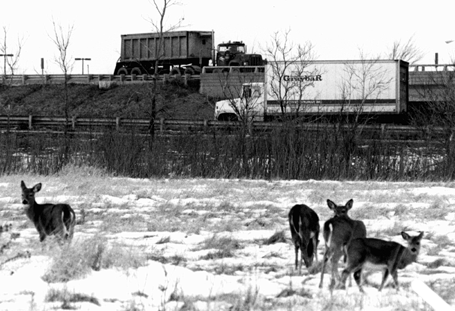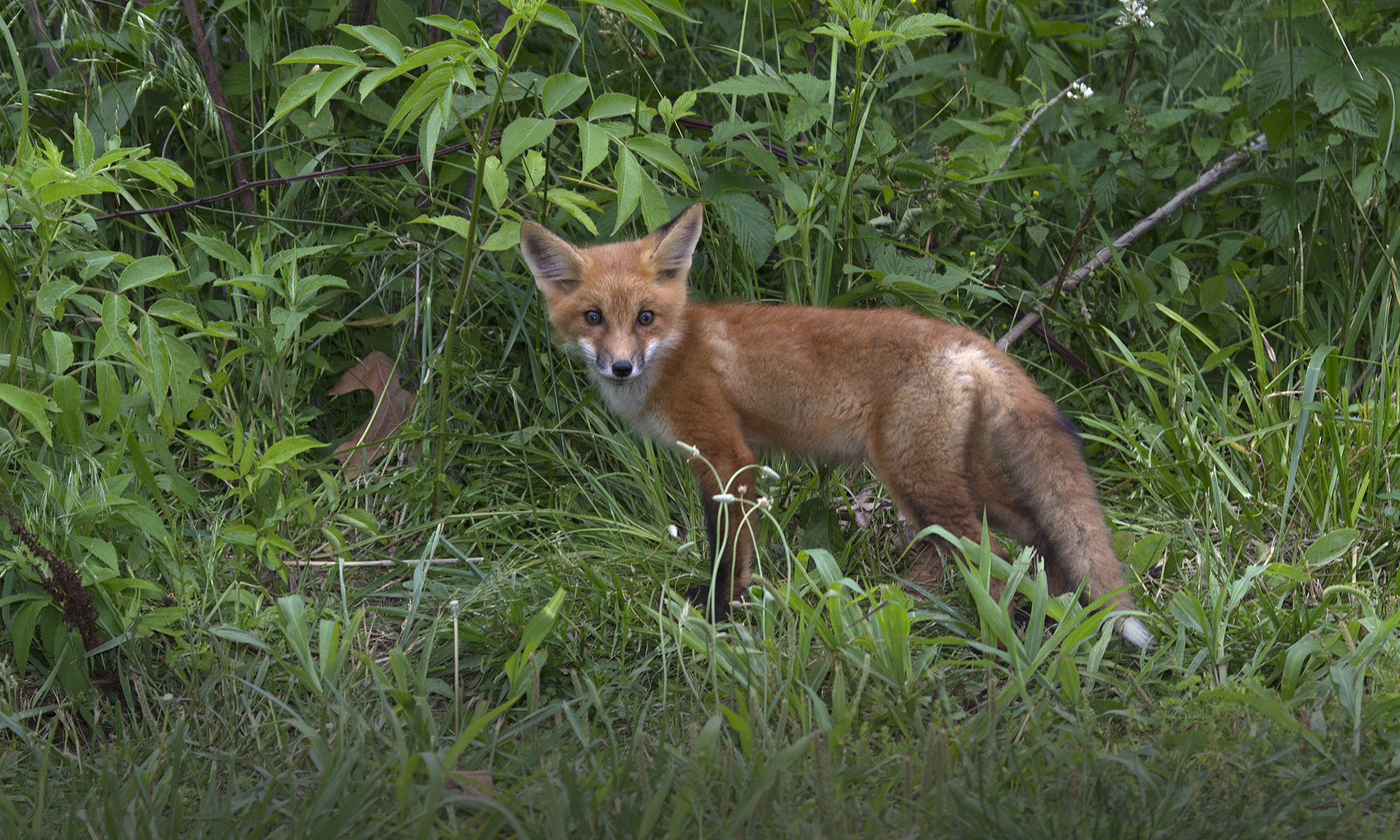Noise is an especially pervasive by-product of human civilization, one that has the ability to spread into natural areas and influence animals at a distance.

Anyone accustomed to the outdoors knows how quiet one must be to be able to see some wary kinds of animals. One can imagine how the sound of gunshots might affect a coyote. However, anecdotal accounts abound of wild animals that are tolerant of human noises; for example, deer that barely look up as commercial airliners roar close overhead and birds that breed so close to blast noise that their nests bob about in the pressure waves.
Noise can affect animals in many ways, including interfering with their hearing of predators or prey, disrupting their vocal communication, and causing more vaguely defined changes such as “stress” or avoidance of a noisy area. In the case of extremely loud noise, animals’ hearing may be temporarily affected or permanently damaged.
The scientific evidence addressing the issues of human noise and wildlife is still rather meager, but some interesting research has been performed. Field censuses have compared areas near roads with areas selected to be as similar as possible but farther (over 300 yards) from roads. Many species were found in significantly lower numbers in the plots close to roads. Unfortunately, we do not yet know the mechanism for this effect. Possibilities include noise, sight of vehicles, smell, perhaps even fewer available insects.
In other experiments, anurans (frogs and toads) living near highway noise could not determine the direction of sound sources as well as those living in quieter places. The males near highways altered their calling and spaced themselves differently when attempting to attract females. We obtained similar results by playing recorded highway noise from loudspeakers. We verified that it was the noise generated by the highway traffic and not other kinds of pollution or indirect causes that affected the anurans.
As in much ecological research, our study of the effects of human noise on wildlife has ranged into many disciplines, including acoustics, the psychology of hearing, medical aspects of hearing loss, animal husbandry, and modern wildlife biology. We have collected and summarized scientific articles pertaining to noise effects on wildlife.
This research is sponsored by the U.S. Army Construction Engineering Research Laboratories because the U.S. military is responsible for about 12 million acres of land, including critical habitat for hard-pressed wildlife species. Many sources of military noise, such as small-arms fire, off-road and other vehicle traffic, and helicopters, are comparable to noise found almost anywhere in Illinois.
Ronald P. Larkin, Center for Wildlife Ecology

